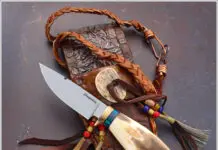Mason Mungle doesn’t need elaborate trappings, technology or even a therapist to find inner peace and to recharge his batteries after a long workweek. His needs for the occasion are meager.
“When I can grab some wire and a rifle and take off someplace to work on a fence, it’s great,” says Mungle. “My best times are when I am on a four-wheeler by myself, fixing fence. I can’t hear anyone talking. All I hear is birds and all I see might be a coyote or deer.”
Tamara Wagman finds joy in similar simplicity.
“Just walking through a pasture, seeing the horses, enjoying the beauty of all of the green, of the amazing sunsets is tremendously rewarding and relaxing,” Wagman says. “It’s a great way to unwind.”
Mungle and Wagman are just two of the many Oklahomans who take refuge in and routinely drape themselves in the comforting cloak of open spaces, the verdant outdoors and working family ranches. But Mungle and Wagman aren’t what one might necessarily expect of those whose lives are tightly entwined with the rich Oklahoma soil and the living things it nurtures and feeds.
Both Mungle and Wagman are busy professionals with bustling, big-city careers. Mungle is president of Farmers Royalty Company, a sizable oil investment and royalties company based in Oklahoma City. Wagman is an attorney with Tulsa-based Frederic Dorwart, Lawyers, where she specializes in securities, mergers and acquisitions for clients such as BOK Financial.
The two are among a vibrant but diminishing population of Oklahomans who pair active careers in the city with substantial amounts of time on their own or on family ranches.
“I grew up in a small town in Nebraska, and I love Nebraska, but it’s very cold,” Wagman says. “When we had occasion to drive down to Texas, I would see all of these ranches throughout Oklahoma and I always wanted one.”
So, just over 15 years ago after living back East following college, Wagman and her husband moved to Oklahoma.
“We could have chosen to live anywhere, but we chose Oklahoma in part because we could work in the city and then drive 30 minutes and be out in the country,” Wagman says. “It lets us have the best of both worlds. I need the mix – a rural lifestyle but with access to arts and culture, an airport. I’ve found that here.”
Today, Wagman calls Wagman Ranch in Talala home. Husband Marc works full-time on the horse ranch; Tamara is a prize-winning rider.
Although Mungle has a home in Norman, his heart remains on the Atoka cattle ranch his family began operating as a dairy almost a century ago. He spends many weekends there, helping other family members with the working ranch.
Mungle says that when he was very young and growing up on the ranch, he had a grandfather who lived in town proper and who taught him a valuable lesson.
“He really instilled in me a belief in the value of living in two worlds,” he says.
Mungle isn’t the only one who sees the benefits of the city mouse-country mouse lifestyle.
Rural Roots
Among the most common shared traits of men and women who pair urban and rural lifestyles is that many of them enjoyed childhoods in the country.
When Mike Spradling was growing up in Broken Arrow, it was still a rural area and the family enjoyed a small acreage. Spradling’s connection to the land and to agriculture came naturally through working the land with his family and with his involvement in agricultural organizations. Spradling enjoyed such organizations and recognized the value of being involved in leadership. Today, he is president of the Oklahoma Farm Bureau and sits on the boards of or participates in numerous other agricultural leadership organizations.
“We could have chosen to live anywhere, but we chose Oklahoma in part because we could work in the city and then drive 30 minutes and be out in the country,”
Today, Spradling’s family owns and operates The Flying G Ranch in Lotsee, a “town” that exists entirely on the family property, having been incorporated years ago by Spradling’s wife’s family to prevent possible annexation by expanding Sand Springs and Tulsa. In addition to commercial pecan growing, Spradling also helps operate the family equestrian center and raises Hereford cattle.
“People who live in rural Oklahoma do so because they want to,” Spradling says. “The question is whether or not they can afford it. It is almost impossible to get started in agriculture now. You either have to marry into it or inherit it.”
Spradling knows of which he speaks, citing his own “marriage into agriculture.” The ranch had been owned and operated by his wife’s family for decades. While still in college, Spradling and his wife faced the difficult decision about the future of the ranch, eventually deciding to keep it in the family, operate it and to diversify their interests to maintain its viability.
They have lived on the ranch ever since, even as Spradling’s career and industry interests see him traveling regularly.
“Agriculture is a lifestyle; it’s not always for business,” Spradling says. “This is how we choose to live, and I don’t think that there is a better environment.”
State Rep. Skye McNiel (R-Creek County) has also returned to her rural roots, despite a busy legislator’s schedule. She and her family live on a ranch a half-mile from where McNiel grew up in Bristow. She, her husband and father operate a cattle re-sell operation.
“My family owns and sells cattle and horses, and I started working with them at 10 years old,” McNiel says. “It was real work, not a play thing. I worked on Saturdays and Sundays on the ranch all through college. I kept doing it through my sixth month of pregnancy.”
McNiel went on to work in marketing for a bank and briefly owned and operated a flower and gift shop. She was elected to office in 2006 at just 27 years old. But there was never any question that she would retain her rural lifestyle.
“I very much appreciate the way my family raised me in rural Oklahoma,” she says. “Rural communities are so caring. The lifestyle is so very different. It’s laid back, you get dirty, but you feel like there is no confinement the way there is in the city.”
Still, not all busy rural resident professionals are replicating their childhood experience.
“I guess you would call how I grew up suburban,” says Thomas Miller. “We grew up on the outskirts of a small town in Mississippi, but it wasn’t on much land. My parents grew a vegetable garden every year, and the whole time I was growing up, at the dinner table my parents would talk about how they wanted one day to buy a parcel of land and farm it – even if it was just a small operation. When I was older, I could tell that it was really the lifestyle that they wanted.”
“Our children grew up in a rural setting but near enough to the city to have the best of both worlds.”
His parents’ ambitions stayed with Miller. Although his work required him to travel and to frequently relocate, he says he always planned on settling down in a small agricultural setting. Twenty years ago, he says, he began saving money to institute the plan. Finally, just a few years ago, he settled onto a small acreage southeast of Tulsa where he grows a sizable garden and raises a few animals. Selling the fruits of his labor supplements his retirement income and savings.
“My only regret is that I didn’t do this sooner,” he says. “I’m retired now, so my interests in the city are much more limited. I wish that I had done this when I was still working. I think coming home to an environment like this would have made me much more balanced and content when I was working.”
Miller says that when he would talk to colleagues about his rural ambitions, they would frequently laugh and dismiss them. That’s not uncommon for today’s professionals.
“I call it my alter egos,” Wagman says. “There’s a business-suit me and there’s a jeans-and-boots me. My riding friends get a kick out of it when I show up in a business suit and my colleagues and clients love it when they see me in riding dress. We joke about it and refer to our ‘civilian’ friends and to our ‘horse’ friends. Most of our friends live in Tulsa and when they come to visit they generally say two things: They don’t know how it is that I ever leave the ranch, and they don’t know how I make the commute.”
As is the case with others, Wagman says technology greatly empowers her dual lifestyle.
“I can do business from anywhere,” Wagman says. “I’ve conducted business meetings from horseback. Fortunately, my boss also rides.”
Spradling says that when friends from a city visit him, the experience of being able to walk around in a space larger than a yard alone amazes them.
“But I love to see the expressions on their faces when they get put on a horse,” he says.
McNiel says her colleagues are very supportive, both of her lifestyle and the mammoth commute it requires.
“Many people are very inquisitive and wonder what it is like to live a rural lifestyle – or else they say they can’t imagine what it’s like,” McNiel says. “It didn’t use to occur to me that there were people who didn’t grow up this way, who lived in the city and had set routines and ate dinner at the same time.”
McNiel says her lifestyle intrigues many people to whom it is entirely foreign. But she loves the variety it offers.
“I have two different lifestyles,” she says. “I wear a suit and heels and makeup to go to work, grab lunch in the city and enjoy the urban lifestyle. Then, at home, it’s jeans and a t-shirt and I hang out at the barn with the kids. The positives far outweigh the negatives of rural living and of the commute.”
Spradling says he has had ample opportunities to introduce the unfamiliar to the rural lifestyle. His institutional activities have led to him hosting foreign officials and dignitaries.
“You see the biggest smiles on their faces when they get on a horse for the first time,” he says.
Bearing On Child Rearing
Growing up in Creek County, McNiel says that her family had their most significant and difficult conversations while they were working outside.
“If I ever had to have a real talk with my parents, it was at the barn,” she recalls. “We were just comfortable there. My girls are just as comfortable in that situation, talking to their dad as they are talking to me. Our family connects when we’re home and outside, when we’re riding in the arena or when we’re showing pigs. I hope that when they are teens, we can still build on that relationship and that they will still be comfortable talking to us. It was that way with my parents and me. We worked out a lot in that time.”
It is the influence on their children and grandchildren that has strongly inspired many to maintain a rural lifestyle.
“Our children grew up in a rural setting but near enough to the city to have the best of both worlds,” Spradling says. “They got to learn about life and death, and about being very caring because it’s part of the rural lifestyle. We care for animals and for the soil, because it is part of life.”
Mungle recalls the joys of his own childhood growing up on the family dairy farm and how different they are from the way many children grow up today.
“I had a wonderful childhood,” he says. “There were barns to play in and there was hay to make caves out of. When it was warm enough, we went barefoot all the time. It was wonderful.”
That active, open-air environment is something Wagman feels is important to her children.
“Just the open spaces, the exercise and the access to outdoor action is such a great way to grow up,” she says. “The kids can fish or hunt, make bonfires in the front yard; they have a lot of the freedom and peace that I had growing up, and I am glad they can have it now.”
Wagman says her children also learn to be capable, responsible and self-reliant because of their lifestyle and that these are traits that will serve them well as adults.
“Any businesswoman has been called on to summon her inner cowgirl,” she quips.
Wagman’s dual lifestyle permits the family to enjoy those things offered in the city too, from enjoying events at the BOK Center to guitar lessons for the kids to eating sushi.
But the children’s environment also helps bring out the best in Wagman’s two young boys.
“As brothers, it’s nice that one can’t run off to a friend’s house, and this makes them closer together,” Wagman says. “They see each other so much, they have to get along.”
Miller’s grandchildren visit from Atlanta every year for several weeks in the summer. He says it is the only time they experience country life.
“Those are the best times,” he says. “Now that they are almost teens, they have that kind of cynical attitude when they first get here. They love to see us, but they’re very much girly-girls when they first get here every year. They don’t want to get dirty and they are used to television and games all day. But by day two or three, all that is out the window and they roll up their sleeves and become real tomboys.
They have a great time working with the animals, wandering through the woods, building forts. They become entirely different girls and they get along better. Their dad can never believe the change in them. But that’s what happens when the environment is changed.
“I don’t think that there is a healthier or happier environment for children,” Miller adds.
The End Of The Line?
While past generations might well have benefitted from the lessons and lifestyle of rural living, few people are optimistic that future generations will have the same opportunities.
“I’m afraid that you see a trend in that the family farm is disappearing,” McNiel says. “Selling cattle is big business. Corporate ranches are taking over and squeezing family farms out. But it isn’t just business they are taking away; it’s a way of life. I think people who work and who also farm will still be around. But there is no way most people could be full-time in agriculture.”
Spradling agrees.
“Seventy percent of farmers’ income comes from off-farm sources because either one or both people work off the farm,” he says.
Spradling says that the importance of agriculture is only increasing, even while family farms and ranches struggle.
“People are only three meals away from a riot anywhere in the world,” he says. “American agriculture is being asked to increase production by 70 percent to meet the needs of the future population. I’m very concerned that the next generation of leadership continues to tell our story.”
But challenges abound.
“The average age of a person in agriculture is 54 to 55,” Stradling says. “It’s tough to get young people.”
Still, Stradling says he believes his own family will maintain The Flying G, and that continuity is warming.
“I planted this young tree in March, and when I put it into the ground, I didn’t see what I would get out of it. I see what my kids, my grandkids and my great-grandkids will get out of it.”
Wagman feels that rural living is a disappearing lifestyle and laments the likelihood. But she also sees the possibility of the trend changing.
“Technology has made work more flexible since people can do a lot of work from anywhere,” Wagman says. “I wonder if this might reverse the flow of people. Hopefully it will revitalize small communities.”
Miller feels it unlikely that rural life will be common in the future.
“It’s funny that when a lot of people leave home in the country to move into the city, they’ll say it’s because they want to be around more people,” he says. “Then they get to the city, complain about traffic, lock all their doors and never even get to know their neighbors. But they don’t see it that way. All the influences in our culture drive people to want the newest thing, and then the next newest thing. Our culture doesn’t have room for in it anymore for people who live in the country. It’s a whole different world and I am sorry to see it in decline.”
Oklahoma’s cities and its vast countryside are two very different places, as those who split time between the two worlds attest. Balancing the two can be a challenge.
“Sometimes the drive home isn’t so bad,” McNiel says. “Besides giving me the chance to return calls, it also lets me have some time to decompress. That way when I am home, I am really home. “
To McNiel and others, home means lush Oklahoma green, a big sky and wide open spaces.























